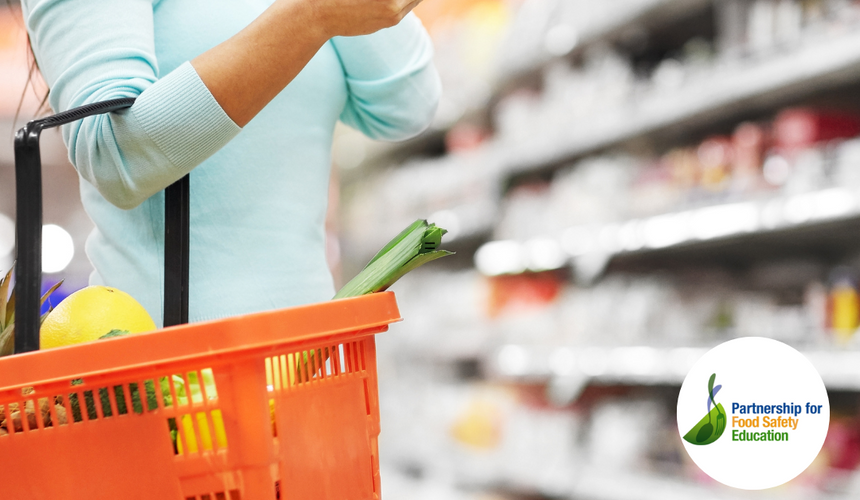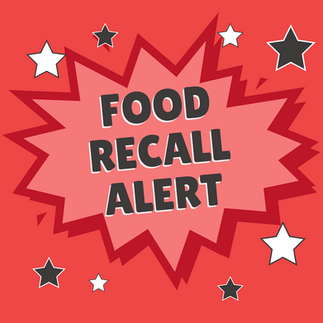Maximizing Food Safety from Farm to Fork: Tips For Safe Food Handling, Storage Guidelines, Food Safety and Recalls + Infant Feeding Resource Fun From a Registered Dietitian!
- Jessica

- Sep 19, 2024
- 11 min read
Updated: Sep 28, 2024
COLLECTIVE DAY OF ACTION For Food Safety! From Farm To Fork
If you didn't happen to know, September marks National Food Safety Education Month! Food safety has always been an important topic, but it hit a new light personally when the infant formula recall and shortage came about. Food safety is something discussed in the Dietitian world from the start - it's unfortunate to see such little change in improvements though... I have been a Registered Dietitian for 10 years now, started learning all those 'dietetics things' 14 years ago, yet here we are. Still. & don't even make me throw it back to the E.Coli outbreak featured in "Poisoned" that Mr. Bill Marler talks all about.... I was a young one then....
Ugh....
National Food Safety Education Month is the perfect time to bring more awareness to safe food handling and hand hygiene in our communities and through social media outreach. The day aims to unite partners, educators and federal liaisons to create a loud voice across social media channels
The theme for the day will be “From Farm to Fork," sharing the story of the chain of prevention and why safe food handling is important for good health.
From Farm to Table: How Food Reaches Your Plate
When we think about food safety, it’s helpful to understand the journey food takes from the farm to your table. This process includes several critical steps that ensure the food you eat is safe, fresh, and nutritious.
1. Growing and Harvesting
Fruits, vegetables, grains, and livestock are grown on farms. Farmers must follow strict guidelines to prevent contamination from the environment, like keeping water and soil clean and managing pests safely. For example, livestock is raised with care to prevent diseases from spreading.
2. Processing and Packaging
Once harvested or slaughtered, food goes through processing. This can include cleaning, cutting, cooking, or packaging. It’s essential that facilities maintain a high level of sanitation, keep food at safe temperatures, and minimize handling to avoid contamination.
3. Transportation
After processing, food is transported to stores, restaurants, or directly to your home. During transport, trucks and containers must keep food at the right temperature to avoid spoilage. Refrigerated foods like meat, dairy, and fresh produce are especially sensitive during this stage.
4. Retail and Storage
Once the food arrives at the grocery store, it's displayed for you to buy. Stores follow strict guidelines to ensure food is stored properly on shelves or in refrigerators and freezers. Once you bring the food home, it’s up to you to store it correctly to maintain safety.
5. At Home: Preparing and Cooking
When you prepare meals at home, following food safety practices like the ones discussed earlier – cleaning hands and surfaces, storing foods at the right temperatures, and cooking to the correct temperature – ensures your family stays healthy.
The Basics of Food Safety: Keeping Your Food Safe at Home
Food safety is super important to keep your family healthy and avoid foodborne illnesses. You don’t need to be a chef to make sure you’re handling and storing food safely! With a few key steps, you can prevent harmful bacteria from growing and make sure your meals stay fresh and safe to eat.
1. Cleanliness Is Key
Before you start cooking, wash your hands with soap and warm water for at least 20 seconds. This helps remove bacteria and germs that could end up in your food. You should also clean your cutting boards, knives, and countertops after handling raw meat, poultry, or fish to avoid cross-contamination.
Tip: Use separate cutting boards for raw meat and veggies to be extra safe!
2. Proper Food Storage
Storing food at the right temperature is critical to prevent bacteria from growing. The rule is simple: keep cold foods cold and hot foods hot.
Refrigerate foods within 2 hours of cooking, or within 1 hour if the temperature is above 90°F.
Set your refrigerator to 40°F (4°C) or lower, and your freezer to 0°F (-18°C) or lower.
Cooked leftovers should be stored in airtight containers in the fridge and eaten within 3-4 days.
Freezing food is a great way to make it last longer. Most frozen foods stay safe indefinitely, but for best quality, use them within 2-6 months depending on the type of food.
3. Cooking Temperatures
Cooking food to the right temperature is one of the most important steps in preventing foodborne illnesses. Use a food thermometer to make sure your food is cooked all the way through.
Here are the minimum internal temperatures for common foods:
Chicken and turkey (whole or ground): 165°F (74°C)
Ground beef, pork, or lamb: 160°F (71°C)
Steaks, roasts, and chops (beef, pork, lamb, or veal): 145°F (63°C) with a 3-minute rest time
Fish: 145°F (63°C)
Eggs: Cook until both the yolk and white are firm, or cook egg dishes to 160°F (71°C)
Reheating leftovers: Heat them to 165°F (74°C) to make sure they’re safe to eat.
4. Thawing Food Safely
The safest way to thaw frozen food is in the refrigerator, but here are three methods you can use:
Refrigerator: Plan ahead, as this can take a day or more depending on the food.
Cold water: Submerge the food in cold water, changing the water every 30 minutes. Cook immediately after thawing.
Microwave: Use the defrost setting, but cook the food right after thawing.
Avoid leaving food out on the counter to thaw – bacteria can grow quickly at room temperature.
5. Danger Zone: Watch the Temperature
The "danger zone" for bacteria growth is between 40°F and 140°F (4°C and 60°C). In this temperature range, bacteria can double in as little as 20 minutes. Keep food out of this zone as much as possible by refrigerating it or keeping it hot until served.
Hot foods should stay above 140°F (60°C), and cold foods should stay below 40°F (4°C). If food has been left out in the danger zone for more than 2 hours (or 1 hour if it’s hot outside), it should be thrown out.
6. Leftovers: When to Toss Them
No matter how tasty those leftovers are, they don’t last forever. Here’s a quick guide to how long you can safely keep common leftovers:
Cooked meat and poultry: 3-4 days in the fridge
Soups and stews: 3-4 days
Casseroles: 3-5 days
Pizza: 3-4 days
When in doubt, use your senses. If something smells off or looks unusual, it’s better to be safe than sorry and throw it out.
Infant Formula and Breast Milk Safety
Infant feeding comes with its own set of safety rules, whether you're using formula or pumping breast milk.
Infant Formula Safety
Preparing and storing formula safely is key to keeping your baby healthy. Here are some simple guidelines:
Before preparing formula, wash your hands and sterilize bottles, nipples, and any equipment used.
Mixing formula: Follow the manufacturer’s instructions on the label. Don’t water down formula, as this can dilute the nutrients your baby needs.
Storage: Prepared formula should be used within 1 hour of mixing if left at room temperature. If refrigerated, use it within 24 hours.
Leftovers: If your baby doesn't finish a bottle of formula, discard any leftovers within 1 hour to avoid bacteria growth.
Breast Milk Safety
Breast milk is a natural source of nutrition, but it needs to be handled and stored safely to keep it fresh and nutritious.
Freshly pumped breast milk can stay at room temperature for up to 4 hours.
In the fridge, breast milk can be stored for 4 days.
If you need to freeze breast milk, it can last for up to 6 months in a standard freezer or 12 months in a deep freezer, though using it within 6 months is ideal.
Thawing breast milk: Always thaw in the fridge or under warm running water. Never refreeze thawed breast milk, and use thawed milk within 24 hours.


Final Thoughts: Stay Safe and Eat Smart
By following these simple food safety tips and understanding the farm-to-table journey, you can avoid harmful bacteria and keep your food fresh and safe to eat. Whether you’re handling everyday meals or feeding your baby, proper care and attention go a long way to keeping your loved ones healthy! As we've seen through multiple food recalls, maintaining vigilance about food safety is crucial. Always stay informed by checking for the latest updates from reliable sources and take immediate action if you have any recalled products in your home. By staying proactive and educated, we can all contribute to a safer food supply for our families and communities. Remember, when in doubt, it's always better to err on the side of caution when it comes to food safety. Stay safe and stay informed!
Food Storage Magnets on the Baby Food and Fun Shop!!
Starting solids can be stressful. You've just gotten used to a feeding schedule, and suddenly, it is time to start trying solids! Food safety is especially important for our little ones as they are more susceptible to foodborne illness. Check out our magnet with Baby Food & Milk Storage Guidelines to help take some of the confusion and stress off your plate!
**Available in Baby Food ; Formula Feeding ; Breastfeeding ; and Combination Feeding
Newsworthy Food Recalls Updates:
I don't think I could write a Blog post about food safety without giving some critical updates on major food recalls going on at the moment!
My personal eye-opener =
Deli Meats From Boar's Head..
The recall of Boar's Head deli meat in summer 2024 has continued to worsen. The company recalled ready-to-eat liverwurst and other deli meat products due to potential contamination with Listeria monocytogenes, a harmful bacteria that can cause serious infections. This recall is considered a Class I recall, meaning there’s a high risk of serious health consequences if the products are consumed. The products affected were distributed nationwide, and consumers are urged to check any Boar's Head deli products they may have purchased during this time.
Listeria Outbreak Linked to Meats Sliced at Delis
In my first coverage of this recall, I shared on July 28, "The outbreak has sickened 34 people across 13 states. All but one of the patients have been admitted to hospitals. Two patients have died, one from Illinois and one from New Jersey, according to the Centers for Disease Control and Prevention."
Unfortunately, that was just the start.. More illnesses and deaths have been reported in this outbreak since my initial share. Listeria is a hardy germ that can remain on surfaces, like meat slicers, and foods, even at refrigerated temperatures. It can also take up to 10 weeks for some people to have symptoms of listeriosis. Do not eat recalled deli meats. Some of the products have sell by dates into October 2024.
As of August 27, a total of 57 people infected with the outbreak strain of Listeria have been reported from 18 states, according to the CDC. Samples were collected from May 29, 2024 to August 16, 2024. Of 57 people with information available, all 57 have been hospitalized. One person got sick during their pregnancy and remained pregnant after recovering. Nine deaths have been reported, including one in Illinois, one in New Jersey, one in Virginia, and as of this update one in Florida, one in Tennessee, one in New Mexico, one in New York, and two in South Carolina.
In response to the recent reports of nine deaths linked to a listeria outbreak and revelations to the public of the deplorable factory conditions, Boar's Head has announced the permanent closure of its Jarratt, Virginia plant, the facility at the center of this tragic and troubling disaster. Boar's Head has also announced it will be discontinuing the manufacturing of liverwurst.
Check That Announcement Here: Boar's Head recently updated their recall statement, apologizing for the outbreak.
Specific Products Include: (Note: Not an extensive list*)
Boar’s Head Ready-to-Eat Liverwurst Products
Produced between June 11, 2024 and July 17, 2024, and have a 44-day shelf-life
“Boar’s Head Strassburger Brand Liverwurst made in Virginia”
5 pound loaves in plastic casing, or various weight packages sliced in retail delis
Sell by dates range from July 25, 2024, to August 30, 2024
Other Boar’s Head Deli Meat Products
Recalled products have “EST. 12612” inside the USDA mark of inspection on the product labels. Many types and sizes were recalled with sell-by dates of August 10 or August 15.
Virginia Ham Old Fashiond Ham, Italian Cappy Style Ham, Extra Hot Italian Cappy Style Ham, Bologna, Beef Salami, Steakhouse Roasted Bacon Heat & Eat, Garlic Bologna, Beef Bologna
Cinnamon:
The FDA began testing cinnamon sold at various stores after fruit purée apple pouches by Schnucks, WanaBana, and Weis were linked to cases of lead poisoning in more than 460 children. The cinnamon in the products was determined to be the source of the heavy metal. This finding led to testing, in which multiple brands have also shown to contain elevated levels of lead. Several ground cinnamon products have now been recalled due to elevated lead levels, which can pose serious health risks, particularly to children. Brands like El Servidor Corp, Gutierrez, and Asli Fine Foods have all recalled cinnamon products after state testing revealed high lead content. These products were sold in multiple states, including New York, Illinois, and Minnesota, primarily in retail stores. Lead exposure, especially for children, can result in developmental and learning issues, while chronic exposure in adults may lead to kidney and neurological problems.
For example, Asli Cinnamon Powder was recalled after routine sampling by the Missouri Department of Health found the finished product had unsafe levels of lead. The recall affects 7-ounce plastic bags with lot numbers and UPC codes on the label, and consumers are encouraged to return the product to the place of purchase for a refund. Fortunately, no illnesses have been reported so far
Consumer Reports did a great breakdown on the specific brands that have shown concerning lead levels. Check out that article here: https://www.consumerreports.org/health/food-recalls/ground-cinnamon-products-lead-contamination-a1132878119/?srsltid=AfmBOopEqdAmy-2tq4Zvd-CDBq3WPeB7ZWmrcpB_FmYHbmaaEkpXOUH4

& if you need that list here rather than going to another site, The brands are shown below, with details from the FDA. (Get more information in the July 25, 2024, and July 30, 2024, alerts from the FDA.) Credit to Consumer Reports at the link above
1. La Fiesta: Lot code 25033. Sold at La Superior and SuperMercados.
2. Marcum: Best by 10/16/25 10DB and 04/06/25 0400B1. Sold at Save A Lot.
3. MK: No codes. Sold at SF Supermarket.
4. Swad: Lot code KX21223. Sold at Patel Brothers.
5. Supreme Tradition: Best by 09/29/25 09E8; 04/17/25 04E11; 12/19/25 12C2; 04/12/25 04ECB12; 08/24/25 08A_ _; 04/21/25 04E5; 2025-09-22 09E20. Sold at Dollar Tree and Family Dollar.
6. El Chilar: Lot codes F275EX1026 and D300EX1024. Sold at La Joya Morelense.
7. El Servidor: No codes. Sold at Mannan Supermarket Inc.
8. El Chilar: Lot codes D181EX0624 and E054EX0225. Sold at El Torito Market (Maryland).
9. Marcum: Best by 12/05/25 12 D8 (Missouri) and 12/05/25 12 D11 (Virginia). Sold at Save A Lot.
10. Swad: Batch no. KX28223: Best by October 2026 (Connecticut). Sold at Patel Brothers.
11. Supreme Tradition: Lot codes 10A11, Best by 10/06/25 (California). Sold at Dollar Tree.
12. Compania Indillor Orientale: Expiration and Lot code: 08 2024 L1803231 (Connecticut). Sold at Eurogrocery.
13. ALB Flavor: Best by and Lot code: 08/30/2025 - LA02 (Connecticut). Sold at Eurogrocery.
14. Shahzada: No codes. Sold at Premium Supermarket (New York).
15. Spice Class: Best by 12/2026. Sold at Fish World (New York).
16. La Frontera: No codes. Sold at Frutas y Abarrotes (New York).
17. Asli: Lot code: DDDLUS. Sold at A&Y Global Market, Columbia, Mo.
Remember when the Cinnamon Applesauce Pouches were recalled due to elevated lead levels?....
Read my Blog on that Topic Here:
*Note: the cinnamon recall above is separate from the cinnamon applesauce recall
❤❤
Thank you for your support and love in this space! It means more to me than you will ever know.
I truly enjoy sharing this information and I hope you find the information provided valuable. If you do find this information helpful, I kindly ask that you consider sharing - via social media, word of mouth, email, etc. I would love to help support as many out there as I can! <3
Want to make sure you don't miss out on important and valuable information like this?! Hit that link/button below and fill out the quick form! You'll get an email notice when new and important Blog topics are posted + you'll get a copy of my FREE monthly newsletter!!
Fill Out This Quick Form to Get All The Info, Updates, and Fun!! Don't Miss Out!!
Thank you again for giving Baby Food & Fun, LLC a place to grow and flourish, just like our kids :)
Jessica Enderle, R.D., L.D.

#babyfood #feedingbaby #infantfood #infantfeeding #babyledweaning #blw #babypuree #puree #combofeeding #feedinglittles #babyfoodideas #homemadebabyfood #babyeats #toddlerfood #toddlermeals #kidfriendlyfood #yum #mom #registereddietitian #dietitian #mealplanning #whatweats #infantnutrition #foodideas #babyfoodie #babynutrition #parentsupport #feedingkids #babyfoodandfun #letstalkbabyfood

Product Title
16 px collapsible text is perfect for longer content like paragraphs and descriptions. It’s a great way to give people more information while keeping your layout clean. Link your text to anything, including an external website or a different page. You can set your text box to expand and collapse when people click, so they can read more or less info.
$320

Product Title
16 px collapsible text is perfect for longer content like paragraphs and descriptions. It’s a great way to give people more information while keeping your layout clean. Link your text to anything, including an external website or a different page. You can set your text box to expand and collapse when people click, so they can read more or less info.
$900

Product Title
16 px collapsible text is perfect for longer content like paragraphs and descriptions. It’s a great way to give people more information while keeping your layout clean. Link your text to anything, including an external website or a different page. You can set your text box to expand and collapse when people click, so they can read more or less info.
$560

Product Title
16 px collapsible text is perfect for longer content like paragraphs and descriptions. It’s a great way to give people more information while keeping your layout clean. Link your text to anything, including an external website or a different page. You can set your text box to expand and collapse when people click, so they can read more or less info.
$280















































Comments